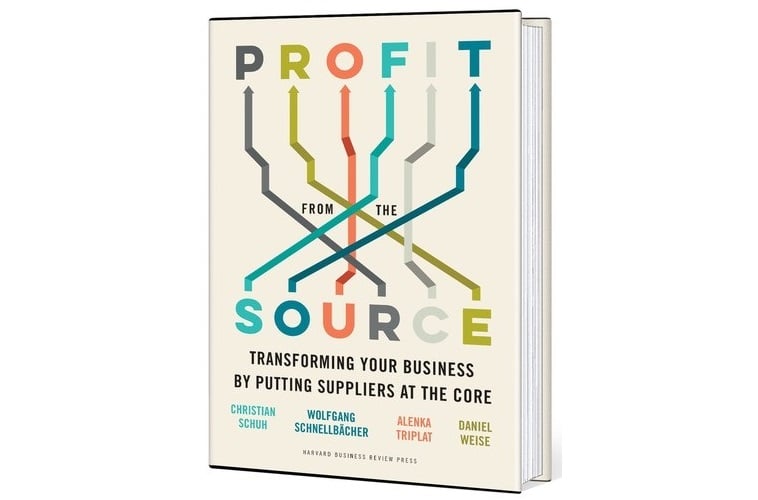Not All Suppliers Are Born Equal
Sponsored Content

Note: In the second of a three-part series on the lessons from their new book Profit from the Source: Transforming Your Business By Putting Suppliers At The Core, authors Christian Schuh, Wolfgang Schnellbächer, Alenka Triplat and Daniel Weise explain how CEOs can find cost savings by taking a fresh approach to procurement.
***
Inflation is back — and it is back with a vengeance. After years of low inflation, companies are now having to deal with prices rising to record levels. This is thrusting chief procurement officers into the spotlight as never before.
That’s because, in the eyes of most CEOs, the No. 1 job of their CPO is to deliver cost savings. The trouble is that, as we explain in our new book, Profit from the Source: Transforming Your Business By Putting Suppliers At The Core, published by Harvard Business Review Press, many CEOs are instructing their CPOs to tackle the problem in the wrong way.
Until relatively recently, companies were able to ride a favorable macroeconomic wave toward lower costs. Ever since the Berlin Wall came crashing down (opening Eastern Europe and adding one billion people to the global economy as workers and consumers) and China joined the World Trade Organization (making the world’s largest low-cost labor market available to global companies), CEOs have been able to keep costs down. Now, as the world adjusts to a new post-pandemic normal and as geopolitical tensions rise—with a war in Eastern Europe, China suffering a slowdown not seen for 30 years, and the U.S. imposing restrictions on the companies that American corporations can do business with — CEOs have fewer options.
So, what do they need to do? What can they do?
In our view, CEOs need to get their CPOs to ditch an antiquated approach to procurement that relies on coercing suppliers to yield a portion of their profit margin in return for continued business. This may have worked in the past. But it’s not working anymore. Now, it is a pointless, zero-sum game that is failing to deliver. Instead, they should get their CPOs to take a leaf out of the playbook of the big tech companies.
It is an often-overlooked fact that many technology companies do not actually make anything. The success of Apple, one of the world’s most valuable companies, is usually attributed to beautiful design, remarkable technical innovation, and a deep understanding of the consumer. These are all factors, certainly. But one capability trumps them all: an extraordinary capacity for managing a large network of suppliers.
Above all, what the big tech companies do is differentiate between their thousands of suppliers. They recognize that not all suppliers are born equal. Some are more important than others. In our experience, about 85 percent of a global company’s procurement expenditure goes to the top 120 to 240 suppliers of commodities, components, and other goods and services (depending on the size of the company). The remaining 15 percent goes to the hundreds or thousands of other suppliers spread around the world. Therefore, it makes sense that the CPO should focus disproportionately on the top suppliers.
We recommend that companies divide their suppliers into three distinct categories:
- “A” suppliers, who number between 20 and 40 and account for about 50 percent of the procurement budget
- “B” suppliers, who number anything between 100 and 200 and account for about 35 percent of the budget
- “C” suppliers, who constitute the largest group of vendors but who account for only about 15 percent of the budget.
Having separated suppliers in this way, companies can then begin to tailor different customized strategies for each of these three types.
In a cost crisis, the “A” suppliers, as the biggest recipients of a company’s procurement budget, are more important than ever. As a result, we recommend that companies offer these suppliers entry to a special program, which we describe in Profit from the Source. We call it the 360-degree program because in return for making a significant upfront commitment to double savings every year for an initial three-year period, these suppliers are offered an exclusive wraparound package of tailored business support.
We encouraged the CPO of one of our clients — one of the world’s leading automakers — to introduce a 360-degree program when he needed to find savings amounting to many hundreds of millions of dollars in a single quarter in order to create the financial headroom required to invest in electric vehicles. Two-thirds of the 30 “A” suppliers agreed to participate — and the CPO achieved his goal. The program was so successful that in the following years, some of the other 10 key suppliers who had been initially skeptical about the value of the partnership for them started to see potential value for their own business, and joined the program.
The approach to “B” and “C” suppliers must be quite different than the approach to “A” suppliers, because while there are more “B” and “C” suppliers, they account for a smaller proportion of the procurement budget. Where the approach to “A” suppliers should be personal, strategic, and customized, the approach to “B” and “C” suppliers should be more distant and general. In this regard, it is worth noting that Apple, which has led the world in the way it forges partnerships with its most important suppliers, is nevertheless focused on squeezing out all unnecessary costs from suppliers. Typically, CPOs should try to automate the relationship with the “B” and “C” suppliers. They should make use of the latest AI and other digital tools when they interact with them.
By taking this variegated approach, CEOs can free up the time of their CPO and procurement team to focus on the top, or “A,” suppliers. This is critical because, as we explain in Profit from the Source, these suppliers can offer so much more than cost savings.
If, as we suggest, they are placed at the core of a business, and if at the same time the CPO is empowered with a new mandate and a retooled function, CEOs can expect to tap all the key sources of competitive advantage: not only cost savings but also innovation, quality, speed, risk reduction and, as we will show in the third and final article in the series, sustainability.


